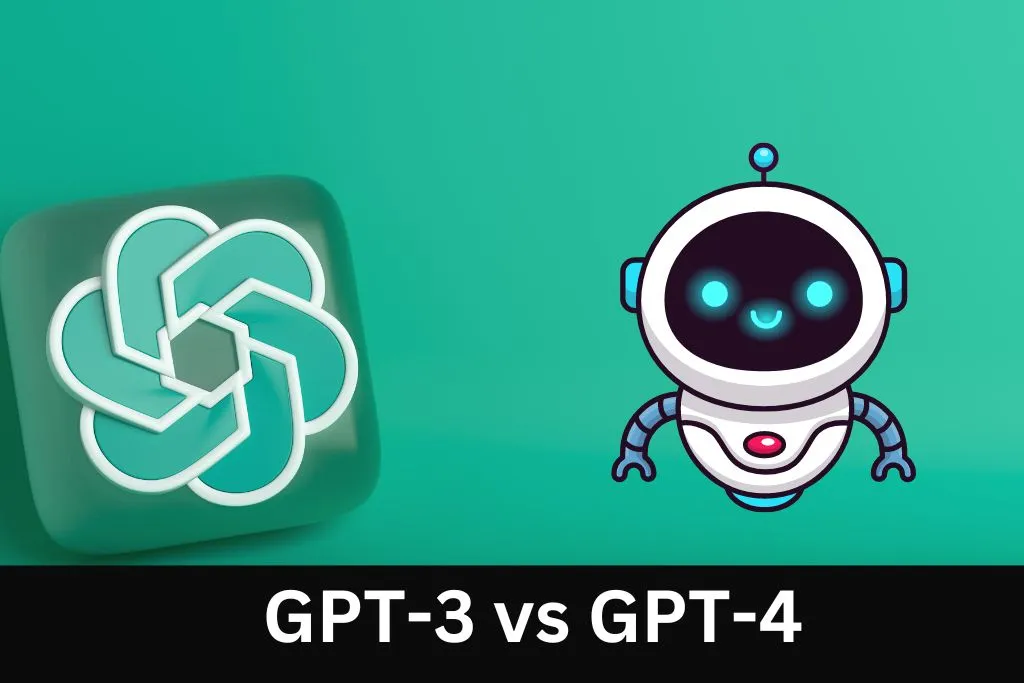When it comes to natural language processing, GPT-3 has been a groundbreaking model that has revolutionized the field. However, it is only natural for researchers and practitioners to be curious about the future developments in this domain. This leads to the question of what the difference is between GPT-3 and GPT-4. In this blog, we will explore the key differences between these two models, and what we can expect from GPT-4.
Introduction to GPT-3 and GPT-4
GPT-3 (Generative Pre-trained Transformer 3) is a natural language processing model developed by OpenAI. It has a massive 175 billion parameters, making it one of the largest and most powerful language models in existence. GPT-3 is capable of generating human-like text, answering questions, translating languages, and much more.
On the other hand, GPT-4 is still in development, and not much is known about it yet. However, it is expected to surpass GPT-3 in terms of parameters, performance, and capabilities.
Size and Parameters
One of the key differences between GPT-3 and GPT-4 will be the size and number of parameters. GPT-3 has 175 billion parameters, which is already a significant improvement over GPT-2 (1.5 billion parameters) and GPT-1 (117 million parameters). However, GPT-4 is expected to have even more parameters, potentially reaching the trillion mark.
Performance
GPT-3 has set the bar high for natural language processing models. It has been able to achieve state-of-the-art performance on a wide range of language tasks, including language generation, question answering, and more. GPT-4 is expected to surpass GPT-3’s performance in all of these areas, given its increased parameters and capabilities.
Capabilities
GPT-3 has demonstrated an impressive range of capabilities, including language translation, question answering, chatbot development, and more. However, there are still areas where it falls short, such as long-term memory and understanding complex scientific or technical concepts. GPT-4 is expected to address these limitations and further expand the capabilities of natural language processing models.
Training Data and Techniques
One of the reasons why GPT-3 has been so successful is its training data, which was collected from a diverse range of sources, including books, websites, and academic papers. Additionally, GPT-3 was trained using a technique called unsupervised learning, which allowed it to learn patterns and structures in the data without explicit guidance.
It is expected that GPT-4 will also use unsupervised learning, but with an even larger and more diverse training dataset. The hope is that this will lead to even more nuanced and accurate language processing.
Computing Power
Training a language model with billions or even trillions of parameters requires a massive amount of computing power. GPT-3 was trained using specialized hardware and took several months to complete. It is likely that GPT-4 will require even more computing power and resources to train.
Applications
GPT-3 has already been used in a variety of applications, including language translation, chatbots, and even creative writing. It has also been used in fields like finance, healthcare, and customer service. With the increased capabilities of GPT-4, we can expect even more innovative and impactful applications of natural language processing.
Challenges
Despite its impressive performance, GPT-3 still faces some challenges. For example, it can sometimes generate biased or offensive language based on the biases in the training data. Additionally, it is not always clear how the model arrives at its predictions, which can make it difficult to debug or troubleshoot. Addressing these challenges will be important for ensuring the continued progress and success of natural language processing models like GPT-4.
Interpretability
One of the challenges with language models like GPT-3 is their lack of interpretability. It can be difficult to understand how the model arrived at a particular prediction or generated a particular piece of text. This lack of interpretability can be a hindrance in applications like healthcare or legal domains where explanations are required.
It is expected that GPT-4 will address this challenge by incorporating techniques for interpretability. This could include the ability to provide explanations for its predictions or generate text that is more transparent and understandable.
Ethical Considerations
As with any advanced technology, there are ethical considerations to keep in mind when developing and using natural language processing models like GPT-3 and GPT-4. For example, there are concerns about the potential misuse of these models for malicious purposes, such as generating fake news or deepfakes.
It is important for researchers and practitioners to consider the ethical implications of their work and develop safeguards to prevent misuse. This could include incorporating ethical principles into the design of the models or developing methods for detecting and preventing malicious use.
Cost
Training a language model with billions or trillions of parameters requires a significant amount of resources and can be expensive. GPT-3 was trained using specialized hardware and required a significant investment from OpenAI.
It is expected that GPT-4 will require even more resources and be even more expensive to develop. This cost could limit the number of organizations that are able to develop and use these models, which could have implications for the democratization of artificial intelligence.
Conclusion
GPT-3 and GPT-4 are two powerful natural language processing models that have the potential to revolutionize the way we interact with technology. While GPT-3 has already demonstrated impressive performance in a variety of language tasks, GPT-4 is expected to push the boundaries even further. These models have the potential to impact a wide range of fields, from education and healthcare to business and entertainment.
As with any powerful technology, there are also potential ethical considerations to be aware of, including the potential for bias and the need to ensure that these models are used responsibly. Despite these challenges, the development of models like GPT-3 and GPT-4 represents an exciting step forward in the field of artificial intelligence and natural language processing, and has the potential to unlock new possibilities for human-machine interaction.
Recommendations
Frequently asked questions about the differences between GPT-3 and GPT-4:
Q: What is the main difference between GPT-3 and GPT-4?
A: The main difference between GPT-3 and GPT-4 is that GPT-4 will likely be even larger, more powerful, and more capable than its predecessor. It is expected to have a larger training dataset, use more advanced techniques, and require more computing power to train.
Q: What are the applications of GPT-3 and GPT-4?
A: GPT-3 has been used in a variety of applications, including language translation, chatbots, and creative writing. GPT-4 is expected to have even more applications, including in fields like finance, healthcare, and customer service.
Q: What are the challenges with GPT-3 and GPT-4?
A: One of the challenges with both GPT-3 and GPT-4 is their lack of interpretability, making it difficult to understand how the model arrived at a particular prediction or generated a particular piece of text. Additionally, there are ethical considerations to keep in mind, such as the potential misuse of these models for malicious purposes.
Q: What is the expected release date for GPT-4?
A: GPT -4 is already Released on March 14, 2023
Q: Will GPT-4 be more expensive than GPT-3?
A: It is likely that GPT-4 will be even more expensive to develop and train than GPT-3, due to its larger size and more advanced capabilities. This cost could limit the number of organizations that are able to develop and use these models, which could have implications for the democratization of artificial intelligence.
Q: How does GPT-3 and GPT-4 compare to other natural language processing models?
A: GPT-3 is currently one of the largest and most powerful natural language processing models available. However, there are other models such as BERT, RoBERTa, and T5 that have also demonstrated strong performance in a variety of natural language processing tasks. It is expected that GPT-4 will continue to push the boundaries of what is possible in natural language processing.
Q: How will GPT-4 impact the job market?
A: GPT-4 is likely to have a significant impact on the job market, particularly for jobs that involve language processing tasks such as translation, customer service, and content creation. While it is possible that some jobs could be automated by GPT-4 and other natural language processing models, it is also likely that new jobs will emerge that require specialized knowledge in working with these models.
Q: Can GPT-3 and GPT-4 be biased?
A: Yes, like any artificial intelligence model, GPT-3 and GPT-4 can be biased if they are trained on biased data or programmed with biased algorithms. It is important for developers to be aware of this potential bias and take steps to mitigate it, such as using diverse training datasets and evaluating the model’s outputs for potential bias.
Q: Will GPT-4 be accessible to everyone or only to select organizations?
A: It is likely that GPT-4 will be accessible to a select group of organizations due to the significant resources required to develop and train the model. However, there are efforts to democratize access to artificial intelligence and make these models more widely available to researchers and developers around the world.
Q: What are some potential future developments in natural language processing?
A: Natural language processing is a rapidly evolving field, and there are many potential future developments. Some possibilities include models that can understand and generate more complex forms of language, such as sarcasm or humor, as well as models that can interact with humans in more natural and intuitive ways. Additionally, there are efforts to make natural language processing more efficient, ethical, and sustainable.
Q: How can GPT-3 and GPT-4 be used in education?
A: GPT-3 and GPT-4 have the potential to revolutionize education by providing personalized, interactive learning experiences for students. For example, they could be used to create intelligent tutoring systems that adapt to each student’s learning needs, or to generate educational materials such as quizzes, practice problems, and instructional videos.
Q: What are some potential ethical concerns with GPT-3 and GPT-4?
A: There are several ethical concerns to consider with GPT-3 and GPT-4. One concern is the potential for these models to be used for malicious purposes, such as generating fake news or impersonating individuals online. Additionally, there are concerns around the use of these models for surveillance, as they could potentially be used to monitor and analyze large amounts of online communications.
Q: How do GPT-3 and GPT-4 relate to the concept of artificial general intelligence (AGI)?
A: GPT-3 and GPT-4 are examples of narrow artificial intelligence, meaning they are designed to perform specific tasks within a limited domain. AGI, on the other hand, refers to a hypothetical type of artificial intelligence that would be capable of understanding and performing any intellectual task that a human can do. While GPT-3 and GPT-4 are impressive examples of narrow AI, they are not yet close to achieving AGI.
Q: Can GPT-3 and GPT-4 be used for language learning?
A: Yes, GPT-3 and GPT-4 could be used to support language learning by generating text in a foreign language, providing language translation services, or generating language learning exercises and quizzes. However, it is important to note that these models may not always be accurate or error-free, and that human language instructors still have an important role to play in language learning.
Q: How do GPT-3 and GPT-4 impact the field of artificial intelligence research?
A: GPT-3 and GPT-4 are significant developments in the field of artificial intelligence research, and have the potential to push the boundaries of what is possible with natural language processing. These models have already inspired new research in areas such as interpretability, bias mitigation, and ethical considerations, and are likely to continue to drive innovation in the field.











